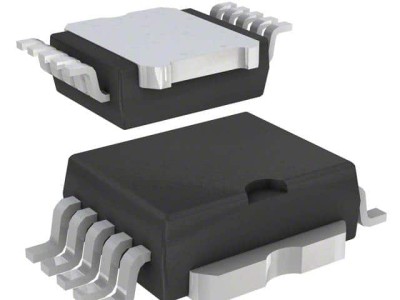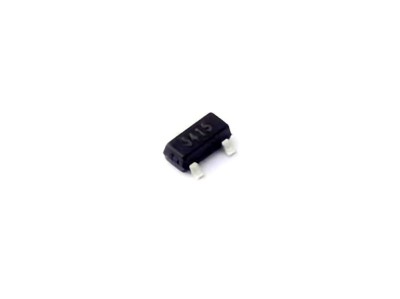The CR2032 battery is widely used in a variety of devices such as watches, key fobs, calculators, and medical devices. However, like all Batteries , they may face issues over time. This article will explore common troubleshooting steps and solutions for CR2032 batteries, ensuring that your devices stay Power ed and functional.
CR2032 battery, CR2032 troubleshooting, battery issues, watch battery, key fob battery, battery replacement, CR2032 solutions, battery lifespan, battery problems
Understanding the CR2032 Battery and Its Common Issues
The CR2032 battery is a type of lithium coin cell battery that is commonly used in devices that require a compact, long-lasting power source. Its small size and reliable energy output make it a popular choice for items like wristwatches, car key fobs, digital thermometers, calculators, and fitness trackers. However, just like any other battery, the CR2032 can encounter issues that may prevent your devices from functioning properly. In this first part of our article, we will discuss the common problems associated with CR2032 batteries and how to troubleshoot them effectively.
1.1 Battery Power Loss: The Most Common Issue
One of the most common problems users face with CR2032 batteries is a loss of power. Over time, these batteries naturally deplete as they supply energy to a device. If you notice that your device has suddenly stopped working or is behaving erratically, the CR2032 battery may simply be running low on power.
Troubleshooting Steps:
Check the Battery Expiry Date: Before concluding that the battery is faulty, always check the expiration date on the packaging. If the battery is past its expiration date, it might not function properly even if it's unused.
Test the Voltage: You can use a multimeter to check the voltage of the CR2032 battery. A fully charged CR2032 typically reads around 3 volts. If it reads significantly lower, it’s time to replace it.
Replace with a Fresh Battery: If the battery voltage is low or the device isn't working properly, replacing the CR2032 with a new one is the most straightforward solution.
1.2 Battery Corrosion
Another issue that users may encounter is corrosion on the battery Terminal s or in the device's battery compartment. Corrosion can happen due to leakage from the battery or poor contact between the battery and the terminals. If you notice any white, chalky residue around the battery or in the compartment, corrosion could be the cause of your device's malfunction.
Troubleshooting Steps:
Remove the Battery: If you spot corrosion, first remove the battery carefully to prevent further damage to the device.
Clean the Corroded Area: Use a soft cloth, cotton swab, or a toothbrush dipped in a mixture of baking soda and water to clean the corroded areas. Be gentle to avoid damaging sensitive components.
Dry the Area: After cleaning, allow the compartment to dry completely before reinserting a new battery.
Use Isopropyl Alcohol: For more stubborn corrosion, you can use isopropyl alcohol (at least 90%) to clean the area. It evaporates quickly and won’t damage the device.
1.3 Battery Not Making Good Contact
A common reason for malfunctioning devices, even when the battery is new, is poor contact between the battery and the terminals. This issue can occur if the battery compartment is dirty or if the battery contacts are loose, bent, or corroded.
Troubleshooting Steps:
Clean the Battery Compartment: Dirt and debris can obstruct the connection between the battery and the device. Clean the compartment with a soft cloth or cotton swab to ensure proper contact.
Check the Battery Terminals: Examine the terminals for signs of wear or corrosion. If the contacts are bent, you may need to gently reposition them with a small tool.
Use a Small Piece of Aluminum Foil: In some cases, if the battery doesn’t fit snugly, you can place a small piece of aluminum foil on top of the battery to create a better connection.
1.4 Temperature Extremes Affecting Battery Performance
Extreme temperatures can impact the performance of a CR2032 battery. While these batteries are designed to operate in a wide range of temperatures, excessive heat or cold can shorten their lifespan or prevent them from working properly.
Troubleshooting Steps:
Avoid Extreme Temperatures: Always try to use your devices within the temperature range specified by the manufacturer (typically between -20°C to +60°C for CR2032 batteries). Avoid leaving devices in hot cars or freezing environments for extended periods.
Store Batteries Properly: If you're storing CR2032 batteries, make sure to keep them in a cool, dry place, away from direct sunlight and heat sources.
1.5 Device-Specific Issues
Sometimes the issue isn’t with the CR2032 battery itself, but with the device in which it is used. In devices like watches or key fobs, the battery may not be the sole cause of malfunction. Circuit board damage, faulty wiring, or broken components could also be contributing to the issue.
Troubleshooting Steps:
Perform a Visual Inspection: Look for any visible signs of damage or wear in the device’s internal components. Check for cracks, loose parts, or disconnections.
Consult the Device Manual: If possible, consult the manual for troubleshooting steps specific to your device. The manufacturer might have detailed instructions for resetting or fixing common issues.
Contact Customer Support: If you are unable to resolve the issue, contacting the manufacturer’s customer support team may provide you with solutions specific to your device model.
Effective Solutions and Preventive Measures for CR2032 Battery Issues
While many CR2032 battery problems can be easily resolved with a few simple troubleshooting steps, it's equally important to adopt preventive measures to avoid issues in the future. In this second part of the article, we’ll explore the solutions to CR2032 battery issues and discuss how you can prolong the life of your battery-powered devices.
2.1 Battery Replacement Tips
One of the simplest solutions for many CR2032 battery-related problems is to replace the old battery with a new one. However, it’s important to follow the correct steps to ensure that the replacement is done properly and safely.
Replacement Tips:
Use High-Quality Batteries: Always choose reputable brands when replacing your CR2032 batteries. Low-quality batteries may not last as long or perform as reliably.
Check Battery Orientation: When inserting the new battery, make sure it is oriented correctly. The positive (+) side should face up in most devices, but always check the device manual for specific instructions.
Avoid Over-Tightening: When reassembling devices like watches or key fobs after replacing the battery, avoid over-tightening screws or seals, as this can damage the device or the battery contacts.
2.2 Proper Battery Storage
Improper storage can affect the lifespan of CR2032 batteries. Storing batteries in hot, humid, or excessively cold conditions can cause them to degrade more quickly. Ensuring the right storage conditions can prevent premature battery failure.
Storage Tips:
Keep in a Cool, Dry Place: Store batteries in a cool, dry environment, away from moisture, heat, or sunlight. A temperature range of 15°C to 25°C is ideal.
Use Battery Cases: If you have spare CR2032 batteries, store them in a protective case to avoid short-circuiting or damage.
Avoid Storing with Metals: Do not store batteries in direct contact with metals, as this can cause a short circuit and potentially drain the battery.
2.3 Regular Maintenance and Inspection
To prevent issues with your CR2032-powered devices, it’s essential to perform regular maintenance. This includes checking battery life, cleaning the battery compartment, and inspecting for damage.
Maintenance Tips:
Check Battery Life Periodically: Even if your device is still working, it's a good idea to check the battery life periodically, especially for devices that are used infrequently. Replacing a battery before it’s completely drained can help avoid unexpected failures.
Clean the Battery Contacts: As part of regular maintenance, use a soft cloth or brush to clean the battery contacts in your devices. This helps ensure a strong connection and prolongs battery life.
Inspect for Leaks or Damage: Batteries that have leaked or corroded can cause damage to the device. Regularly inspect for any signs of leakage and clean the device immediately to prevent further damage.
2.4 Handling Battery Disposal Properly
When it comes to disposing of old CR2032 batteries, it’s important to follow local regulations for proper disposal. Improper disposal of batteries can lead to environmental harm due to the chemicals contained in them.
Disposal Tips:
Recycle the Batteries: Many electronics stores and recycling centers accept used batteries for proper disposal or recycling. Look for locations near you that offer this service.
Do Not Throw in Regular Trash: Never dispose of batteries in regular household trash, as they can leak harmful chemicals into the environment.
2.5 Consider Using a Battery Tester
To avoid the inconvenience of battery failure, consider investing in a battery tester. A battery tester can help you measure the voltage of CR2032 batteries and determine when they need to be replaced. This is especially useful if you have multiple devices that use the same type of battery, as it helps you keep track of their power status.
By following these troubleshooting steps and preventive measures
If you're looking for models of commonly used electronic components or more information about () datasheets, compile all your procurement and CAD information in one place.

